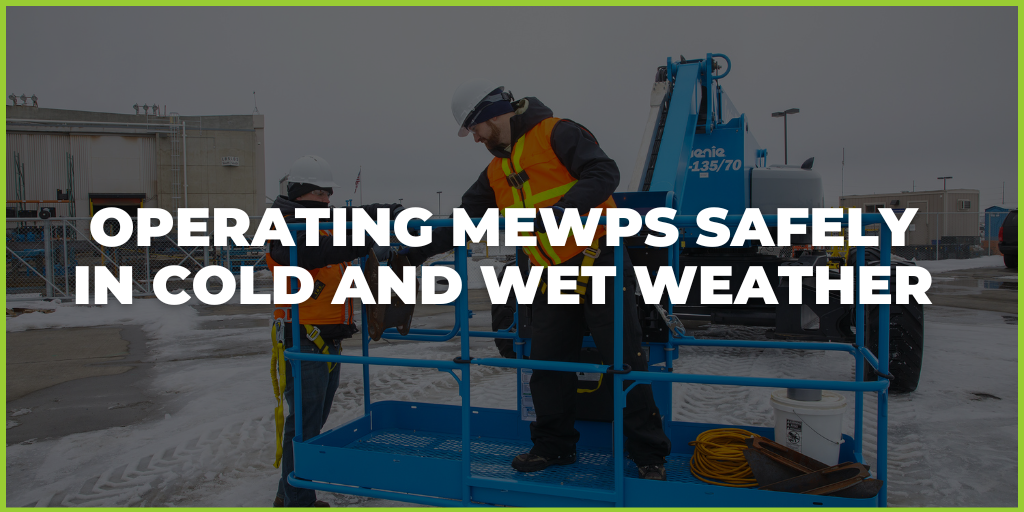What is a full body safety harness?
A full body safety harness is a type of personal protective equipment (PPE) that is designed to be worn by a worker to provide fall protection when working at height.
Harnesses are recommended to be used on Boom type platforms, they are not usually a safe addition when working from a vertical lift, other than in exceptional circumstances.
If you are uncertain, a risk assessment should determine whether it is more appropriate to wear a harness to address the fall risk. https://www.ipaf.org/en-gb/resource-library/fall-protection-mewps-h1
A harness must be used alongside an adjustable restraint lanyard, which is a line of webbing, synthetic or wire rope that is used to secure the workers safety harness by the D-ring to an anchorage point to the platform. If a fall were to occur the lanyard and harness will evenly distribute the force of the fall across the body and keep the worker upright. It is important to conduct a risk assessment before starting work at height tasks to prevent falls from height
Download your free HLS risk assessment template
Using a harness for work at height offers several benefits, focused on safety and risk reduction. Here are some key benefits:
- Fall protection: The purpose of wearing a fitted full body harness and lanyard correctly is to prevent falls from height. By using appropriate anchorage points that should be positioned above the worker, will reduce the distance of the swing if a fall were to occur. This protects the worker from impacting any equipment or building by acting as a barrier, minimising the risk of serious injuries or fatalities.
- Increased Stability: To improve the performance of completing a task by keeping a worker stable and balanced while working at height. The straps featured on a harness can be adjusted to fit securely and centred around the body reducing the stress and fear of falling from height. This stability allows workers to maintain control of their movements.
- Hands-Free Operation: Harnesses often includes multiple attachment points for tools and equipment, allowing workers to have their hands free while working at height. This feature improves productivity and enables the completion of complex tasks that require the use of both hands. It also prevents the risk of injuring others on the ground if a tool were to accidentally slips from a worker’s hands.
- Distribution of impact forces: The body harness straps that are positioned over the shoulders, chest, waist, and shoulders are designed to distribute the forces exerted on the body during a fall. If your harness is incorrectly worn, the forces encountered will be diverted to a vulnerable part of the body, resulting in severe injury and suspension trauma.
- Psychological Comfort: By wearing a full body harness the right size that is not too tight or loose can provide comfort and confidence to workers when performing tasks at height, especially at awkward angles where you do not want the material of the harness to restrict mobility. Having psychological discomfort can impact focus and concentration, so it is important to prioritise a worker’s comfort to improve their overall well-being.
- Compliance with Safety Regulations: The work at height regulations 2005 states, that those working at height must be competent and be trained on how to avoid falling, to minimise the distance and consequences should they fall to avoid injury, as well as how to use relevant equipment. Having a fall protection system in place will ensure that employers and workers are compliant to health and safety regulations and avoid potential fines.
According to the Personal Protective Equipment at Work Regulations 1992 (as amended) “Every employer shall ensure that suitable personal protective equipment is provided to their workers who may be exposed to a risk to their health or safety while at work except where and to the extent that such risk has been adequately controlled by other means which are equally or more effective.”
- Versatility: Harnesses are available in variety of designs and configurations to suit various levels of comfort and work environments, including construction, industrial maintenance, rope access, and more. This versatility makes them suitable for a wide range of tasks at height.
- Training and Education: Wearing a harness promotes a safety-conscious culture and emphasizes the importance of proper training and education on working at height. This focus on training can increase awareness, knowledge, and skills related to fall protection and overall workplace safety.
What harness training is available?
Falls from platform are the number one cause of non-fatal and fatal accidents when using MEWPs, with the risk of an operator being thrown away from the platform if a machine tilts, encounters an obstacle, or if an operator overreaches. If you work in an industry that requires you to work at elevated heights, we encourage you take the training, and learn how to effectively use fall protection equipment to supply more safety in the workplace.
We have recently updated the harness training IPAF accredited courses on our website, where there is now a requirement to complete the harness awareness and user theory and practical course. The skills you gain will help reduce the risk of a potentially fatal accidents and protect your company from the repercussions of those accidents.
Conclusion
It is essential to know how to use and select a harness and restraint lanyard correctly, and how to conduct statutory inspections. This is because it is essential to maintain all equipment in a safe condition and recognise defective harnesses due to deterioration to prevent falls when working at height.
For more information on our website’s harness training courses, click the links below to view the specifications and detailed descriptions to see if this is the best solution for you.
IPAF Harness Awareness (HA) & Harness User (HU)
If you are unsure of what type of training is best for yourself or your team, talk to one of our experts today by calling 0113 524 1018.




